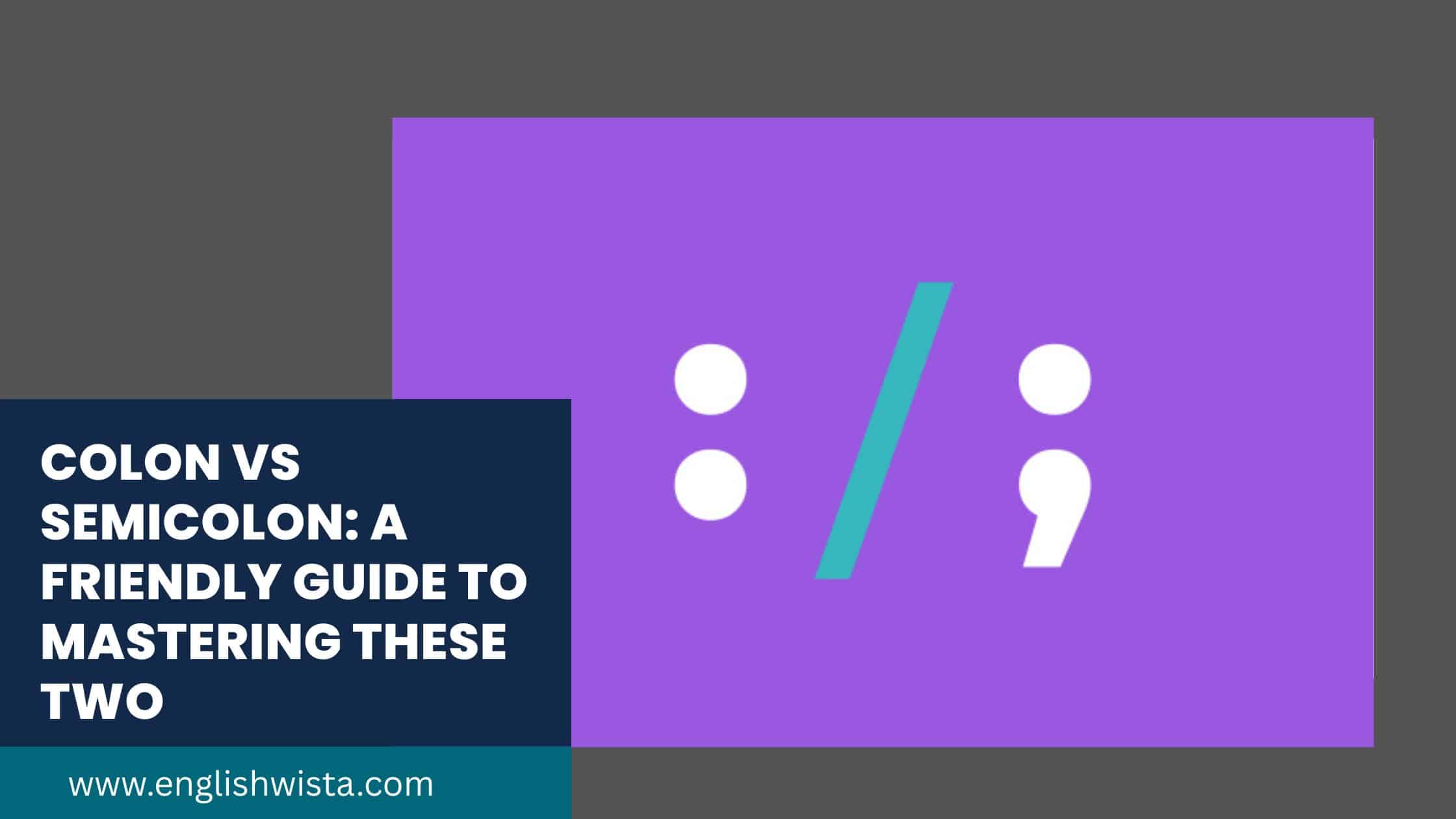Have you ever stared at a sentence and thought, “Should I put a colon here… or maybe a semicolon?” Don’t worry you’re not alone. These two little punctuation marks cause confusion for beginners, non-native English speakers, and even people who write every day.
The colon (:) and the semicolon (;) may look similar, but they serve very different purposes. Think of them as cousins in the punctuation family. They’re related, but they don’t act the same way.
In this article, we’re going to walk step by step through the differences between colons and semicolons. We’ll look at when to use each one, share plenty of real-life examples, clear up common misunderstandings, and even throw in a few fun facts. By the end, you’ll feel confident about when to reach for a colon and when a semicolon is the better choice.
Let’s dive in!
What is a Colon?
A colon (:) is a punctuation mark that looks like two dots stacked on top of each other.
In simple terms, you use a colon when you want to say:
- “Pay attention, something important is coming.”
- “Here’s an explanation.”
- “I’m about to give you a list or detail.”
It introduces something. It points forward.
Example Sentences with Colons
- I have three favorite fruits: mangoes, strawberries, and bananas.
- She gave me one piece of advice: always be kind.
- Here’s the truth: I forgot to do my homework.
Notice how the colon introduces what comes after it? That’s its main job.
What is a Semicolon?
A semicolon (;) looks like a period sitting on top of a comma.
Its main purpose is to connect two closely related sentences without using a word like “and” or “but.”
Think of it as a soft pause stronger than a comma, but not as final as a period.
Example Sentences with Semicolons
- I have a meeting tomorrow; however, I still plan to go out tonight.
- She loves to read; her brother prefers to play video games.
- The cake was delicious; the cookies were even better.
The semicolon keeps the two parts connected, showing they belong together.
Colon vs Semicolon: The Core Difference
Now let’s compare them directly.
- Colon (:) → introduces something. Think: “Here it comes.”
- Semicolon (;) → connects two related ideas. Think: “These belong together.”
Side-by-Side Example
- Correct with colon: He had one goal: to win the race.
- Correct with semicolon: He trained hard every day; he wanted to win the race.
See the difference? The colon explains or introduces, while the semicolon links ideas.
When Should You Use a Colon?
Here are the most common situations where a colon fits perfectly:
- Before a list
- You will need the following items: pen, notebook, and calculator.
- Before an explanation or detail
- She got exactly what she wished for: a brand-new laptop.
- Before a quotation
- His favorite line from the movie was: “May the Force be with you.”
- To emphasize something
- There’s only one thing left to do: celebrate!
When Should You Use a Semicolon?
Semicolons may feel trickier, but with practice they make sense. Here’s when to use them:
- To connect two complete sentences that are closely related
- I love summer; the long days make me happy.
- Before transition words (like however, therefore, meanwhile, etc.)
- I didn’t like the movie; however, my friend thought it was amazing.
- To separate complicated lists (when items already contain commas)
- We visited Paris, France; Rome, Italy; and Madrid, Spain.
Common Mistakes and How to Avoid Them
Mistake 1: Using a colon instead of a semicolon
- ❌ Wrong: I went shopping: I bought apples.
- ✅ Correct: I went shopping; I bought apples.
Why? Because both sides are complete sentences, so a semicolon works better.
Mistake 2: Using a semicolon before a list
- ❌ Wrong: Bring these tools; hammer, nails, and tape.
- ✅ Correct: Bring these tools: hammer, nails, and tape.
Remember, lists belong with colons, not semicolons.
Easy Trick to Remember
Think of the colon as a spotlight. It shines forward and says, “Look at this!”
Think of the semicolon as a bridge. It connects two ideas that could stand alone but are stronger together.
Real-Life Examples: Colon in Action
- My mom gave me one rule: no phones at the dinner table.
- He forgot something important: his wallet.
- The recipe calls for three ingredients: flour, sugar, and butter.
Real-Life Examples: Semicolon in Action
- The rain was pouring; the streets were flooded.
- She’s learning Spanish; her brother is studying French.
- I can’t come today; however, I’ll visit tomorrow.
Fun Facts About Colons and Semicolons
- The colon has been used in writing since ancient Greece. Its name comes from the Greek word kōlon, meaning “part” or “clause.”
- The semicolon was invented in 1494 by an Italian printer named Aldus Manutius. He created it to help readers follow complex sentences.
- Some people call the semicolon the “winking smiley” because it looks like .
Do You Always Need Them?
Here’s something reassuring: you don’t always need colons and semicolons. Often, you can just use a period or a comma with “and.”
But learning to use them makes your writing clearer, smoother, and more professional. They’re tools that give your sentences variety and style.
Quick Practice Exercise
Let’s test what we’ve learned. Which mark should you use colon or semicolon?
- I have one request ___ please be on time.
- We traveled to London, England ___ Paris, France ___ and Berlin, Germany.
- She knew what she wanted ___ a fresh start.
- He loves hiking ___ she prefers swimming.
Answers:
- Colon
- Semicolons
- Colon
- Semicolon
Conclusion
So, colon vs semicolon what’s the final takeaway?
- Use a colon (:) when you want to introduce, explain, or highlight something.
- Use a semicolon (;) when you want to connect two related sentences or separate complicated list items.
Think of the colon as a spotlight and the semicolon as a bridge.
At first, it might feel tricky, but with practice, you’ll get the hang of it. Next time you write an essay, an email, or even a text, you’ll know which one to choose.
And remember, writing is about communication, not perfection. If you can make your meaning clear, you’re already winning. These little marks just help you shine even brighter.



